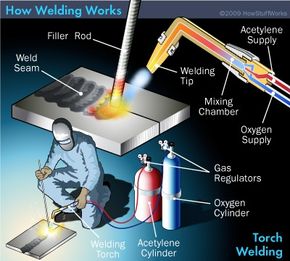The Ultimate Guide to Welding WPS Procedures: An Extensive Introduction for Welders
In the elaborate world of welding, Welding Treatment Specs (WPS) serve as the backbone of making certain quality, consistency, and safety and security in welding operations (welding WPS). As we dive right into the various parts of a WPS and discover the intricacies of credentials and accreditation, we will certainly uncover the vital role these procedures play in the realm of welding.
Importance of WPS Procedures
Understanding the value of Welding Treatment Requirements (WPS) treatments is critical for guaranteeing the top quality and integrity of welded frameworks. WPS procedures work as a roadmap for welders, detailing the required steps, criteria, and materials needed to achieve an audio weld. By adhering to WPS guidelines, welders can guarantee consistency in their job, bring about structurally sound and trusted welds.
Among the primary reasons WPS treatments are important is their function in keeping weld top quality and honesty. Adhering to the specified welding criteria and methods laid out in the WPS helps protect against defects such as porosity, fracturing, or insufficient combination, which can jeopardize the stamina and toughness of the weld. In addition, WPS treatments are essential for making sure compliance with market requirements and codes. By following well-known WPS guidelines, welders can show that their job meets the essential demands for security and quality, giving guarantee to clients, assessors, and regulative bodies. Essentially, the significance of WPS treatments can not be overstated, as they are essential to accomplishing regular, high-grade welds that fulfill industry standards and specs.

Components of a WPS
A Welding Treatment Specification (WPS) commonly makes up crucial elements that detail the specific needs for implementing a weld, making sure uniformity and top quality in the welding process. The crucial parts of a WPS consist of necessary variables such as base steels, filler steels, preheat and interpass temperature levels, welding processes, protecting gases, welding positions, and post-weld warmth treatment needs.
Base metals refer to the products being joined, while filler metals are made use of to fill the void between the base steels during welding. The welding process lays out the specific strategy to be used, whether it's gas steel arc welding (GMAW), secured steel arc welding (SMAW), or an additional technique. Welding placements specify the orientations in which welding can be carried out.

Certification and Qualification
Having developed the essential elements of a Welding Procedure Specification (WPS), the focus now changes towards the critical aspects of qualification and certification in welding methods.

Certification, on the various other hand, is the official recognition of a welder's credentials by an appropriate qualification body or company. Welding certifications are commonly based on the particular welding processes, products, and settings a welder is certified to collaborate with. Holding a legitimate welding certification demonstrates that a welder meets industry standards and is qualified to perform welding jobs to the called for specifications.
Creating a WPS
To create a Welding Procedure Specification (WPS) that meets market criteria, cautious factor to consider of welding processes, materials, and functional parameters is vital (welding WPS). The very first step in developing a WPS is to recognize the welding procedure to be made use of, such as gas metal arc welding (GMAW) or protected steel arc welding (SMAW) As soon as the welding procedure is determined, the following important element is picking the ideal products, taking into consideration variables like base steel type, explanation thickness, and joint layout. Functional specifications such as welding existing, voltage, travel speed, and securing gas structure must additionally be thoroughly specified in the WPS.

Executing and Keeping Track Of WPS
Upon finalizing the extensive Welding Treatment Spec (WPS) that thoroughly information welding procedures, materials, functional parameters, and quality control procedures, the emphasis moves to efficiently carrying out and keeping an eye on the well established treatments. Execution includes guaranteeing that all welders included in the task recognize with the WPS and follow it diligently during the welding procedure. This calls for offering sufficient training and supervision to guarantee adherence to the specified procedures. Monitoring the WPS entails continual oversight to validate that welding tasks line up with the documented specs. Inspections, testing, and high quality control steps are essential parts of the tracking procedure to determine any kind of discrepancies or problems immediately. Routine audits and reviews of the welding procedures assist in preserving consistency and i thought about this top quality throughout the task. Reliable implementation and surveillance of the WPS are vital for making certain the stability, strength, and safety of the welded joints, ultimately adding to the general success of the welding task.
Conclusion
To conclude, understanding and complying with Welding Procedure Specifications (WPS) is critical for welders to make sure top quality, consistency, and safety in their work. By knowing the parts of a WPS, acquiring correct qualifications and certifications, creating in-depth treatments, and carrying out and checking them effectively, welders can improve their skills and proficiency in welding methods. Sticking to WPS procedures is necessary for generating high-quality welds and conference market criteria.
In the detailed world of welding, Welding Procedure Specs (WPS) serve as the foundation of making sure quality, uniformity, and safety and security in welding operations. The welding process describes the details method to be made use of, whether it's gas metal arc welding (GMAW), secured metal arc welding (SMAW), or one more approach.To create a Welding Treatment Requirements (WPS) that fulfills market requirements, mindful consideration of welding processes, materials, and operational criteria is crucial. The initial step in producing a WPS is to recognize the welding process to be made use of, such as gas metal arc welding (GMAW) or shielded metal arc welding (SMAW)Upon finalizing the comprehensive Welding Treatment Requirements (WPS) that diligently details welding procedures, products, operational criteria, and top quality assurance actions, the emphasis changes to efficiently implementing and keeping track of the well established treatments.
Comments on “Welding WPS: Usual Mistakes to Prevent and Just How to Correct Them”